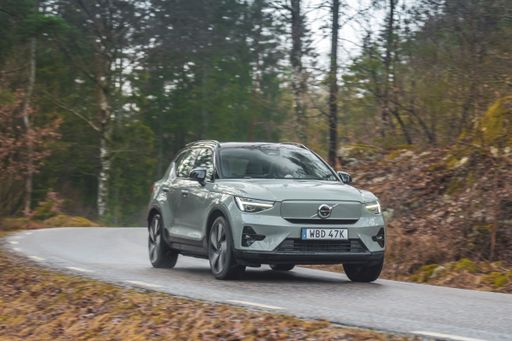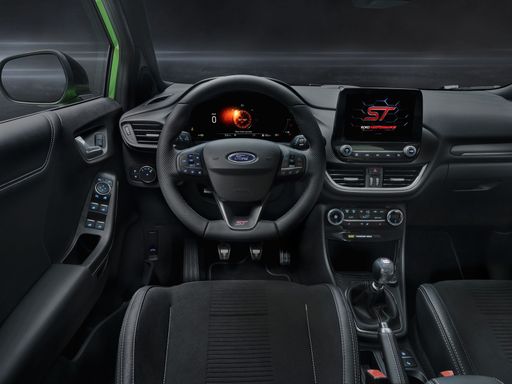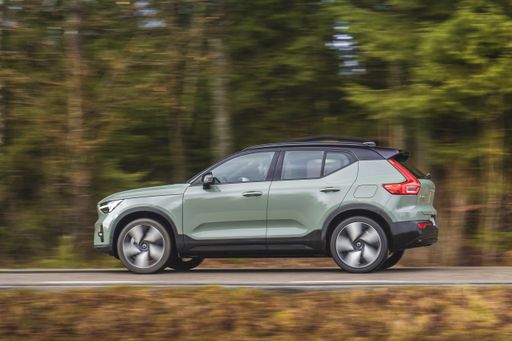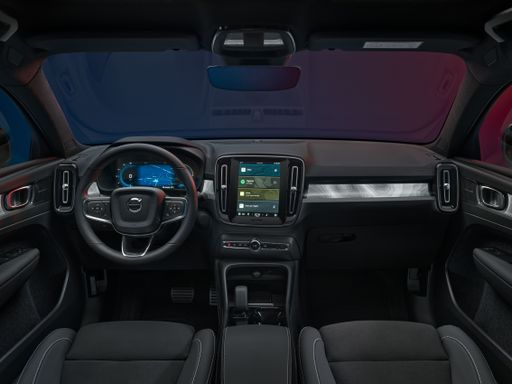Ford Puma vs Volvo EX40 – Which model is better for everyday use?
Compare performance, boot capacity, efficiency and price at a glance.
Find out which car is the better choice for you – Ford Puma or Volvo EX40?
Costs and Efficiency:
Price and efficiency are often the first things buyers look at. Here it becomes clear which model has the long-term edge – whether at the pump, the plug, or in purchase price.
Ford Puma has a clearly advantage in terms of price – it starts at 24800 £, while the Volvo EX40 costs 42800 £. That’s a price difference of around 18077 £.
In terms of energy consumption, the advantage goes to the Ford Puma: with 13.10 kWh per 100 km, it’s distinct more efficient than the Volvo EX40 with 16.60 kWh. That’s a difference of about 3.50 kWh.
As for range, the Volvo EX40 performs evident better – achieving up to 576 km, about 200 km more than the Ford Puma.
Engine and Performance:
Under the bonnet, it becomes clear which model is tuned for sportiness and which one takes the lead when you hit the accelerator.
When it comes to engine power, the Volvo EX40 has a clearly edge – offering 442 HP compared to 168 HP. That’s roughly 274 HP more horsepower.
In acceleration from 0 to 100 km/h, the Volvo EX40 is clearly quicker – completing the sprint in 4.60 s, while the Ford Puma takes 7.40 s. That’s about 2.80 s faster.
In terms of top speed, the Ford Puma performs somewhat better – reaching 210 km/h, while the Volvo EX40 tops out at 180 km/h. The difference is around 30 km/h.
There’s also a difference in torque: Volvo EX40 pulls convincingly stronger with 670 Nm compared to 290 Nm. That’s about 380 Nm difference.
Space and Everyday Use:
Whether family car or daily driver – which one offers more room, flexibility and comfort?
Both vehicles offer seating for 5 people.
In curb weight, Ford Puma is clearly lighter – 1316 kg compared to 2040 kg. The difference is around 724 kg.
In terms of boot space, the Ford Puma offers evident more room – 523 L compared to 410 L. That’s a difference of about 113 L.
In maximum load capacity, the Volvo EX40 performs slight better – up to 1400 L, which is about 117 L more than the Ford Puma.
When it comes to payload, Volvo EX40 minimal takes the win – 480 kg compared to 469 kg. That’s a difference of about 11 kg.
Who wins the race?
The Volvo EX40 proves to be leaves the rival little chance and therefore becomes our DriveDuel Champion!
Volvo EX40 is the better all-rounder in this comparison.

Volvo EX40
Ford Puma
The Ford Puma presents itself as a stylish compact SUV with a distinctive design that combines practicality with a dynamic driving experience. Its sleek lines and sporty aesthetics make it stand out on the road, while the interior offers a comfortable and tech-savvy environment. With an emphasis on efficiency and a smooth drive, the Ford Puma is well-suited for both urban commutes and countryside adventures.
details @ puma.fordpresskits.com
@ puma.fordpresskits.com
 @ puma.fordpresskits.com
@ puma.fordpresskits.com
 @ puma.fordpresskits.com
@ puma.fordpresskits.com
 @ puma.fordpresskits.com
@ puma.fordpresskits.com
Volvo EX40
The Volvo EX40 represents a new chapter in the brand's commitment to sustainability and innovation, combining elegant Scandinavian design with cutting-edge electric vehicle technology. With its spacious interior and intuitive technology, the EX40 provides a comfortable and connected driving experience. The focus on eco-friendly materials and efficient performance makes it an attractive choice for those seeking a responsible and stylish drive.
details @ media.volvocars.com
@ media.volvocars.com
 @ media.volvocars.com
@ media.volvocars.com
 @ media.volvocars.com
@ media.volvocars.com

|

|
|
|
|
Costs and Consumption |
|
|---|---|
|
Price
24800 - 36300 £
|
Price
42800 - 58200 £
|
|
Consumption L/100km
5.4 - 5.9 L
|
Consumption L/100km
-
|
|
Consumption kWh/100km
13.1 - 13.9 kWh
|
Consumption kWh/100km
16.6 - 17.6 kWh
|
|
Electric Range
361 - 376 km
|
Electric Range
480 - 576 km
|
|
Battery Capacity
43 kWh
|
Battery Capacity
67 - 79 kWh
|
|
co2
0 - 135 g/km
|
co2
0 g/km
|
|
Fuel tank capacity
42 L
|
Fuel tank capacity
-
|
Dimensions and Body |
|
|---|---|
|
Body Type
SUV
|
Body Type
SUV
|
|
Seats
5
|
Seats
5
|
|
Doors
5
|
Doors
5
|
|
Curb weight
1316 - 1563 kg
|
Curb weight
2040 - 2170 kg
|
|
Trunk capacity
456 - 523 L
|
Trunk capacity
410 L
|
|
Length
4186 - 4226 mm
|
Length
4440 mm
|
|
Width
1805 mm
|
Width
1863 mm
|
|
Height
1550 - 1555 mm
|
Height
1647 mm
|
|
Max trunk capacity
1216 - 1283 L
|
Max trunk capacity
1286 - 1400 L
|
|
Payload
367 - 469 kg
|
Payload
430 - 480 kg
|
Engine and Performance |
|
|---|---|
|
Engine Type
Electric, Petrol MHEV
|
Engine Type
Electric
|
|
Transmission
Automatic, Manuel
|
Transmission
Automatic
|
|
Transmission Detail
Reduction Gearbox, Manual Gearbox, Dual-Clutch Automatic
|
Transmission Detail
Reduction Gearbox
|
|
Drive Type
Front-Wheel Drive
|
Drive Type
Rear-Wheel Drive, All-Wheel Drive
|
|
Power HP
125 - 168 HP
|
Power HP
238 - 442 HP
|
|
Acceleration 0-100km/h
7.4 - 9.8 s
|
Acceleration 0-100km/h
4.6 - 7.3 s
|
|
Max Speed
160 - 210 km/h
|
Max Speed
180 km/h
|
|
Torque
170 - 290 Nm
|
Torque
420 - 670 Nm
|
|
Number of Cylinders
3
|
Number of Cylinders
-
|
|
Power kW
92 - 124 kW
|
Power kW
175 - 325 kW
|
|
Engine capacity
999 cm3
|
Engine capacity
-
|
General |
|
|---|---|
|
Model Year
2025
|
Model Year
2024
|
|
CO2 Efficiency Class
A, D
|
CO2 Efficiency Class
A
|
|
Brand
Ford
|
Brand
Volvo
|
Is the Ford Puma offered with different drivetrains?
The Ford Puma is offered with Front-Wheel Drive.
The prices and data displayed are estimates based on German list prices and may vary by country. This information is not legally binding.
